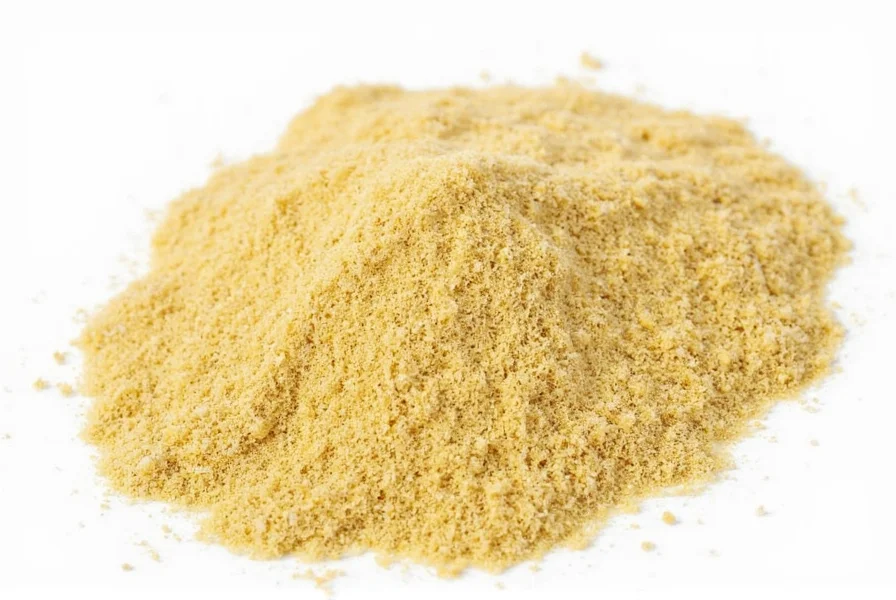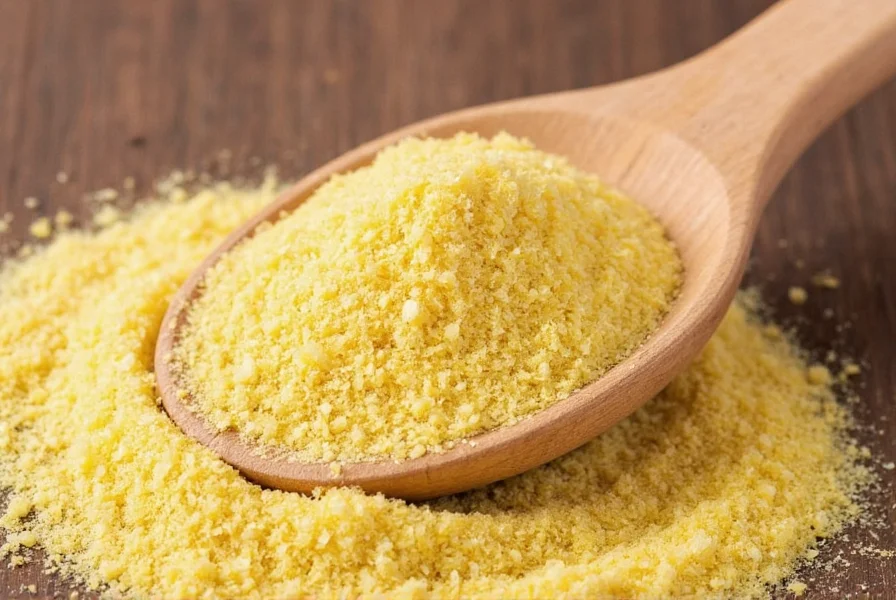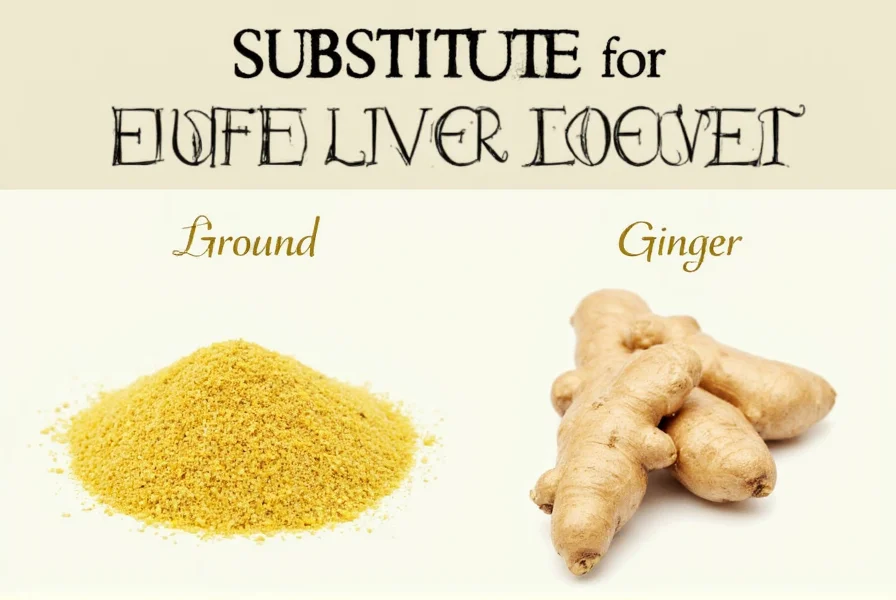The best substitutes for ground ginger are fresh ginger (use 1 tablespoon fresh for 1/4 teaspoon ground), ginger paste (1:1 ratio), or a combination of cinnamon and cardamom (1/8 teaspoon each to replace 1/4 teaspoon ground ginger). These alternatives maintain similar flavor profiles while accounting for differences in potency and moisture content.
When you're in the middle of cooking and realize you've run out of ground ginger, knowing reliable substitutes can save your recipe. As an experienced culinary professional, I've tested numerous alternatives to determine which work best across different cooking applications. This guide provides practical, kitchen-tested solutions that maintain your dish's intended flavor profile.
Understanding Ground Ginger's Role in Cooking
Ground ginger offers a warm, slightly sweet, and mildly spicy flavor that's essential in many recipes. Unlike fresh ginger, which has bright, citrusy notes, ground ginger provides a more concentrated, earthy warmth. This difference matters when selecting substitutes, as each alternative affects your dish differently.
Ground ginger contains approximately 18% essential oils compared to fresh ginger's 1-3%, making it significantly more potent by volume. This concentration difference is why simple 1:1 substitutions often fail. Understanding these properties helps you choose the right replacement for your specific culinary needs when you need to replace ground ginger in baking recipes or savory dishes.

Top 5 Substitutes for Ground Ginger
| Substitute | Conversion Ratio | Best For | Flavor Notes |
|---|---|---|---|
| Fresh ginger | 1 tbsp fresh = 1/4 tsp ground | Savory dishes, stir-fries | Brighter, more citrusy flavor |
| Ginger paste | 1:1 ratio | Curry bases, marinades | Concentrated ginger flavor |
| Cinnamon + cardamom | 1/8 tsp each = 1/4 tsp ground ginger | Baking, desserts | Warm spice profile without heat |
| Ginger extract | 1/2 tsp = 1/4 tsp ground | Delicate recipes | Pure ginger flavor, no moisture |
| Allspice | 1/4 tsp = 1/4 tsp ground ginger | Winter baking, spice cakes | Cloves, cinnamon, nutmeg notes |
When to Use Each Ground Ginger Alternative
Not all substitutes work equally well in every recipe. Your choice should consider both the dish type and desired flavor profile when you need to replace ground ginger in cookie recipes or other specific applications.
Fresh Ginger for Savory Dishes
For stir-fries, curries, and Asian-inspired dishes, fresh ginger provides superior flavor complexity. Grate 1 tablespoon of peeled fresh ginger to replace 1/4 teaspoon of ground ginger. The higher moisture content actually benefits these dishes, helping create flavorful sauces. Remember that fresh ginger has more pronounced heat, so adjust according to your spice tolerance when you need to substitute fresh ginger for ground ginger in recipes.
Spice Blends for Baking
When baking requires ground ginger substitution, spice blends work best. For each 1/4 teaspoon of ground ginger called for, use:
- 1/8 teaspoon cinnamon + 1/8 teaspoon cardamom (ideal for gingerbread)
- 1/4 teaspoon allspice (works well in pumpkin pie)
- 1/8 teaspoon cinnamon + 1/8 teaspoon nutmeg (good for spice cakes)
These combinations replicate ground ginger's warm, sweet profile without the sharp heat of fresh ginger. They're particularly effective when you need to replace ground ginger in cake recipes where texture matters.

Special Considerations for Recipe Substitutions
Successful ingredient substitution requires attention to more than just flavor. Consider these factors when you need to find alternatives for ground ginger in cooking:
Moisture Content Matters
Fresh ginger adds liquid to recipes, which can affect baking chemistry. When substituting fresh ginger in baked goods, reduce other liquids by 1-2 teaspoons per tablespoon of fresh ginger used. This adjustment prevents your ginger cookie recipe without ground ginger from spreading too much or becoming dense.
Flavor Development Time
Ground ginger's flavor develops more quickly than fresh ginger in cooked dishes. When using fresh ginger as a substitute in slow-cooked recipes, add it at the beginning of cooking. For quick-cooking dishes, add it near the end to preserve its bright flavor notes.
Common Substitution Mistakes to Avoid
Even experienced cooks make these errors when trying to replace ground ginger with fresh ginger:
- Using equal volumes - Fresh ginger isn't as concentrated, so 1:1 substitution makes dishes bland
- Ignoring recipe chemistry - Not adjusting liquids when using fresh ginger in baking
- Substituting in the wrong direction - Using ground ginger when fresh is called for creates overly intense flavor
- Not tasting as you go - Always adjust seasoning after substitution
Professional chefs recommend making small test batches when experimenting with substitutions in important recipes. This approach prevents wasting ingredients and ensures your dish turns out perfectly when you need to substitute for ground ginger in special occasion recipes.
When Substitution Isn't Recommended
Some recipes rely so heavily on ginger's unique properties that substitutions significantly alter the final product. Consider these exceptions:
- Traditional gingerbread - The specific chemistry of ground ginger affects texture and rise
- Ginger tea - Fresh ginger provides different medicinal properties
- Fermented ginger recipes - The microbial profile differs between fresh and ground
In these cases, it's better to make a special trip for ground ginger rather than compromise the recipe's integrity.
Frequently Asked Questions
Can I use ground allspice instead of ground ginger?
Yes, you can substitute ground allspice for ground ginger using a 1:1 ratio. Allspice provides a warm, complex flavor that mimics ginger's sweetness without the heat. This works particularly well in baking applications like pumpkin pie or spice cakes, but won't provide the same zesty kick in savory dishes.
How much fresh ginger equals 1 teaspoon of ground ginger?
One teaspoon of ground ginger equals approximately 1 tablespoon (3 teaspoons) of freshly grated ginger. This conversion accounts for ground ginger's higher concentration of essential oils and lower moisture content compared to fresh ginger root.
What's the best substitute for ground ginger in cookies?
For cookies, the best substitute is a blend of 1/8 teaspoon cinnamon and 1/8 teaspoon cardamom to replace each 1/4 teaspoon of ground ginger called for in the recipe. This combination replicates ground ginger's warm, sweet profile without adding moisture that could affect cookie spread and texture.
Can I use ginger ale as a substitute for ground ginger?
Ginger ale isn't recommended as a direct substitute for ground ginger in cooking or baking. While it contains ginger flavor, the high sugar content and carbonation would significantly alter your recipe's chemistry. For small amounts, you could reduce ginger ale to a syrup (simmer 1 cup to 1/4 cup), using 1/2 teaspoon of the reduction per 1/4 teaspoon of ground ginger.
Does ground ginger lose potency over time?
Yes, ground ginger gradually loses potency over time. Properly stored in an airtight container away from light and heat, ground ginger maintains good flavor for 2-3 years. After this time, you may need to use 25-50% more to achieve the same flavor intensity, or consider replacing your spice stock for optimal results in recipes requiring ground ginger.











 浙公网安备
33010002000092号
浙公网安备
33010002000092号 浙B2-20120091-4
浙B2-20120091-4